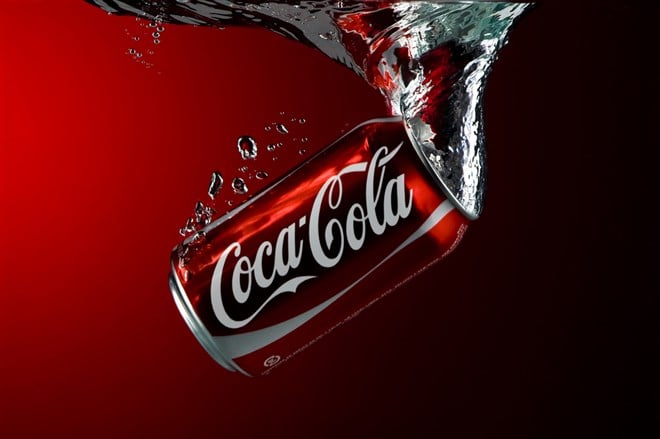
Brand moats are one of the most important aspects leading to success within a business, whether it's success for investors, founders, or consumers experiencing the shared benefits of the underlying company's achievements. Across many industries and sectors, including commodities, investors can identify clear cycles in sales volumes, margins, and ultimately the various return on invested capital metrics that can drive stock prices.
Companies that have established strong "moats" and brand acceptance or loyalty typically do not experience significant swings and deviations in their sales and profitability cycles. Whenever a deviation does occur, as long as the business fundamentals have not changed, it calls for keen attention and support from investors who can identify the value of whatever caused the deviation in the first place, knowing that reversion to the mean is all but inevitable.
Such has been the case for Coca Cola (NYSE: KO) as it closed its 2022 fiscal year with the lowest gross margins in a 9 year look back period, however profitability measures have remained at their highest. Should Coca Cola bulls dig in their trenches as another leg down might approach, or is this a buy the dip situation?
The genie came out of the can
When a company like Coca Cola has been operating for several decades and generations, revenue growth opportunities within the business start to dry up a little. Despite this seemingly natural law for businesses, Coca Cola has reinvented itself many times over by launching new products and riding trends established by consumers, as well as creating the trends that consumers may ride along with. Some case studies can be made of the popularity of "meme" culture surrounding Diet Coke, which has effectively received free marketing as TikToks are made about false myths regarding its health side effects.
Furthermore, in Bill Gates' documentary "Inside Bill's Brain," Mr. Gates and several colleagues are shown sharing Diet Cokes throughout the series, and Warren Buffett has been caught enjoying a sip of the delicious NARTD beverage (Non-alcoholic Ready To Drink) in countless scenarios.
There comes a point, however, when the genie that has been pulled out time and time again out of the coke can will run out of wishes to grand the marketing department and management as a whole. There comes a time when companies get so big and powerful that they must begin to look outside of their established markets in order to fuel further growth and escape stagnation.
Acquire and expand
$5.6 billion USD: that is the size of Coca Cola's largest brand acquisition in its history. This transaction took place in late 2021 as Coca Cola acquired BodyArmor. The reasoning behind this acquisition was to control the production and distribution operations of the brand's sports drinks, in an attempt to compete against PepsiCo (NASDAQ: PEP) Gatorade, which owns the leading brand market share by far within this space, although some argue it may be on a steady decline in popularity and preference. This plug and play acquisition will add, according to Coca Cola management, around $1.5 billion USD in net sales, an accrual of 3.5% to the existing acquirer's revenue.
An interesting dynamic comes to light when investors explore the Coca Cola investors website, namely their geographic segments. It turns out that the company sells an expected 1.9 billion servings of beverages each day across 200 countries. According to the company's annual reports, 36.5% of these servings are allocated to the United States, while only 11% go to China.
These numbers translate to about 693.5 million servings a day for the United States — rounded to roughly 2 servings a day per person in the nation — while China sees 209 million servings a day, which is equivalent to about one serving a week for the average citizen. No wonder that the company is looking to expand and refranchise their bottling operations in Cambodia. This renewed operational commitment and subsequent expansion in marketing can lead to closing the gap quarter by quarter between the two nations.
Some may argue that there is a reason behind China being so far behind in Coca Cola consumption per capita, pointing to dietary preferences and values. Knowing this, management has launched the Spritea brand in the nation, which grew its sales by 18% just in the last operating year.
Further tailwinds
Input costs in beverage production and distribution take the majority of the chunk from top-line sales. Elevated oil prices have caused gross margins to compress to the lowest levels in the past decade; however, Goldman Sachs Group (NYSE: GS) analysts see oil retreating from the commonly accepted $100 per barrel target for 2023. If this prediction were to become true, then gross margins would surely climb back to normalized levels above 60%.
Management is also aiming to deliver organic revenue in the tunes of 7-8%, returning to its pre-pandemic healthy rates. They are also expecting continued oil inflation, which will carry increased costs of goods sold. While some investors may find this to be a conservative view, analysts can be in for a beat in expectations for the bottom line.
All in all, investors can expect the sixtieth consecutive year of dividend increases, and the second-lowest P/E ratios in the past decade for the stock, along with seemingly renewed upside drivers. While margin expansion may not be realized in price targets yet, double-digit upside is still the norm for this stock.














